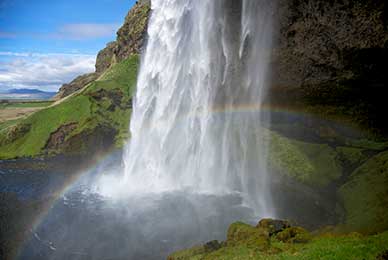5 Tips for Taking Vacation Shots Like the Pros
Text and Photos by Ralph Velasco
Before you come home with more sunset photos (which look just like the last batch) or landscapes with tiny monuments in the distance, get some expert tips for making your next trip photos special.

Goats in a tree, Essaouira, Morocco
These days it seems everyone’s a photographer, at least on some level. Whether working with a high-end DSLR camera or a handy smartphone, most of us now have some sort of device with us at all times to capture images. You’d think that all that practice would make perfect. So why do we inwardly groan when friends offer to show us their vacation photos? Too often the shots are of uninteresting subjects, or are badly framed, or they simply don’t tell the story of the trip. That said, it doesn’t take much to make good shots even better. Most errors are pretty basic, and fixing them is a matter of incremental improvements. The following five tips will help take your next vacation photos to the next level.

Sailing on the Nile, Egypt.
1. Keep it simple.
A large percentage of the people who join my tours around the world are physicians, and they often travel with very high-end equipment, including multiple camera bodies and a whole arsenal of lenses. But these days you can take excellent photographs with very light equipment. In fact, even some professional photographers now rely on their smartphones for everyday or vacation photos.
My recommendation for travel is to pare the equipment down to just one camera body and one lens. Being more quick and nimble is especially helpful when you’re traveling to more exotic locales and want to get shots of the locals as they go about their everyday lives. It’s less intimidating to people everywhere when a photographer photographs with simple gear. People are much more likely to allow you to capture their image if you can do it quickly, without a lot of fuss.
If you want to ditch some heavy equipment but not simplify all the way down to a smartphone or even a small point-and-shoot camera, you might consider a newer category of cameras called “micro four thirds,” or mirrorless cameras. These cameras feature an interchangeable lens mount, but are smaller and lighter than most DSLRs. Available models include Fujifilm X-T1, Panasonic Lumix DMC-GH4, Olympus OM-D E-M1, Samsung NX1, and Nikon 1 V3.

Waterfall, Seljalandsfoss, Iceland.
2. Either it’s in or it’s out.
How often have you seen a shot where the top of the church steeple or the bottom of the subject’s foot is cut off? This kind of chopped off framing is a common amateur problem, but an easily rectified one. All it requires is taking a few extra seconds to look through the viewfinder (or at the digital display), scan the four edges of the frame, and make a simple adjustment. (Note: If you have a digital compact camera with an optical viewfinder, the viewfinder may only display 90 percent or less of the image that will be captured. In this case, you may need to crop your photo later to achieve the exact framing you want.)
3. Watch your backgrounds.
You may be focused on taking a photograph of something close by, in the foreground of a shot. But it’s vitally important that you also look deeper into the scene. You need to recognize the elements in the background, and then decide whether you want to include or exclude them. There are times you’ll want to block an unwanted element in the scene to focus on the subject, and just moving a little bit to the left or right, or up or down, or in or out, can easily accomplish this. But other times you might want to include something in the background, especially if you’re trying to create an environmental portrait of someone to give the viewer more information about the location or the subject. Think about it this way: When you examine a patient, you often look at the whole person to assess overall status, then decide whether you need to focus on the entire body, or just one area or organ for diagnosis and treatment. Similarly in photography, sometimes it’s better to have your subject up against a clean, uncluttered part of the scene, so it doesn’t get lost in or compete with a busy background. Other times the background is an integral part of the scene.
4. Keep challenging yourself.
Give yourself an assignment that will create some sense of urgency. Perhaps it’s using a particular fixed lens that you aren’t accustomed to, so you’ll have to zoom with your feet. Or maybe it’s as simple as deciding to photograph only subjects that are red, or only hands. Or perhaps it’s challenging yourself to photograph the same subject or object in 36 different ways (remember 36-frame rolls of film?). Exercises like these help the creative juices start to flow, almost guaranteed.
5. Work from a shot list.
You want to come home from your vacation with photos that tell the story of your trip: What did you see? Who were you traveling with? What did you eat? What were the people like? If you simply photograph things that strike your fancy, you may arrive home and realize you’ve missed showing some important elements of your voyage. A shot list helps provide variety, so you come back with a well-rounded set of images that truly tells the story of the place.
Today you can create a shot list using a spreadsheet or Notes app. Or, if you’re an iOS user (iPhone, iPad or iPod Touch), you can use an app that I created called My Shot Lists for Travel, available for free on iTunes or the App Store.
Successful travel photography is often a matter of little changes, ones anyone can make with whatever type of camera they’re using. In this case, little things really can make a very big difference.
